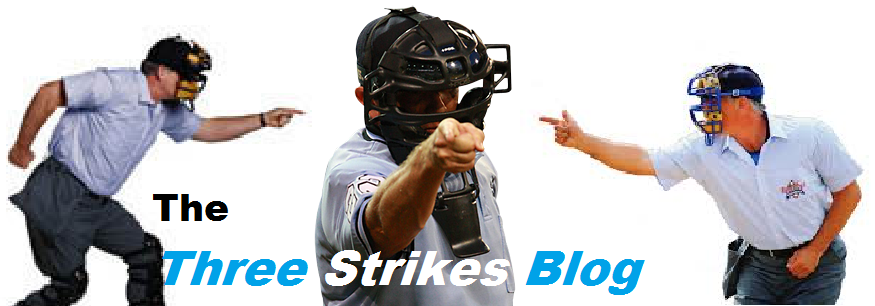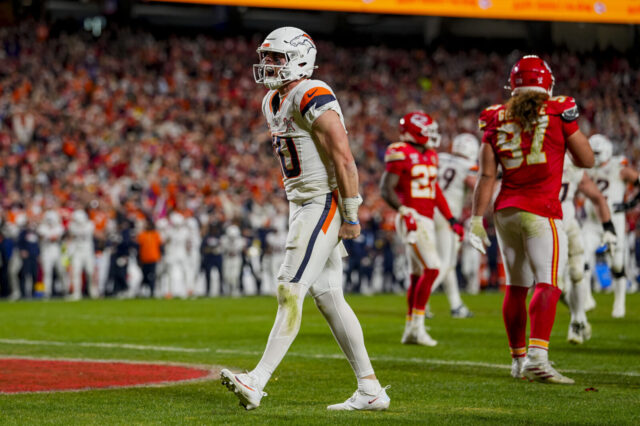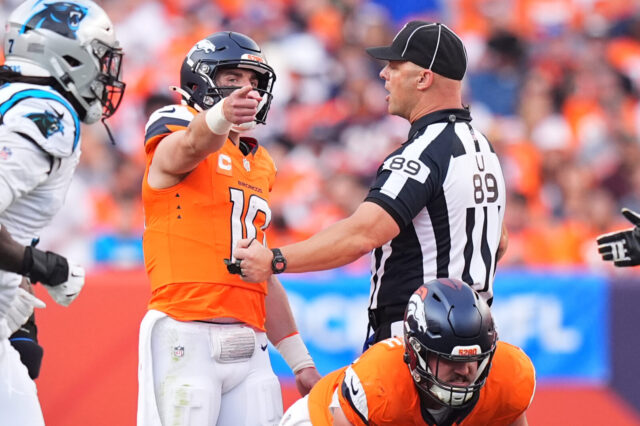 Strike One: At the All-Star break, the Colorado Rockies sat just 6½ games out of the second and final wild card spot in the National League. There were some out there – and apparently some on the inside at 20th and Blake – still grasping onto the “So you’re sayin’ there’s a chance” thing.
Strike One: At the All-Star break, the Colorado Rockies sat just 6½ games out of the second and final wild card spot in the National League. There were some out there – and apparently some on the inside at 20th and Blake – still grasping onto the “So you’re sayin’ there’s a chance” thing.
After dropping three straight to start the second half, is anyone out there still buying that?
Hopefully not. There’s no chance this Rockies team makes the postseason. None. Zip. Zilch.
Being within striking distance of a playoff spot would seem to be encouraging news as the Rockies embarked on the final two and a half months of the season. But don’t buy it. It was, and remains, fool’s gold.
The Rockies have a far better chance to finish last in the NL West than to somehow jump over four teams and sneak into the playoffs.
Fact: The guys in purple pinstripes, who are now currently 10 games under .500, simply aren’t nearly as good as the four teams that are currently ahead of them – the Phillies, Cardinals, Giants and Marlins. Okay, Miami isn’t great, but they have the pitching staff to at least hang in the race. The other three teams are more talented than Colorado all across the board.
Consider these stats: run differential serves as a pretty good indicator or how a team is playing. It reads like this after the first weekend of the second half: St. Louis is +61. Philadelphia is +44. San Francisco is +39. Miami is -13.
Colorado is -69.
Also, no team in the NL, including the lowly Washington Nationals (who took three of four from Colorado earlier this season) have fewer road wins. The Rockies still have 35 road games – 26 of those against teams currently still in playoff contention – left on the slate.
It’s the toughest remaining schedule of all the contenders although no one who follows MLB is putting Colorado and the word “contender” in the same sentence at this point.
Right now, it’s fair to cling to the hope that the Rockies front office sees this reality as well, rather than grasping onto the faint hope of hosting meaningful games in September – which could keep the turnstiles spinning during the start of football season. That mindset, while understandable from a business perspective, remains harmful to the future development of the organization. Rather than keeping this team together for a Hail Mary try at the longest of long shot playoff runs, they should be making trades – starting now – that could bring back high level minor league prospects in return to try to build for next year and beyond. All-Star C.J. Cron should be made available. Same with should’ve-been-All-Star Daniel Bard, shortstop Jose Iglesias, reliever Alex Colome and pretty much anyone else on the roster.
A rebuild is in order and has been since Nolan Arenado and Trevor Story left town.
That’s highly unlikely to happen, however. Unless they completely tank before the end of the month, the front office will still probably keep all or at least most of this group (which had been playing a little bit better baseball going into the All-Star break) together to see if they can keep the fans interested the rest of the way, so they can continue to promote the idea that there’s a chance when there simply isn’t.
No one should be buying into any postseason talk. And the Rockies should be selling.
Strike Two: The “Miracle at Michigan” back in 1994 – the famous last gasp 64-yard Hail Mary pass from Kordell Stewart (via a tip by Blake Anderson) to All-American receiver Michael Westbrook forever placed the star wide out in University of Colorado football lore. The play helped Westbrook earn a bunch of postseason honors as a senior, including recognition as the top wideout in the nation that year.
Yet Westbrook, who had a brief and star crossed NFL career before turning to Mixed Martial Arts, wasn’t the best wide receiver on those powerful Buffaloes offenses of the early 1990’s. The best pass catcher wearing black and gold back in those days was Charles Johnson.
It’s easy to look back at the best days of Bill McCartney’s Buffs and forget about Johnson. Heck, he wasn’t even the most famous Charles Johnson to wear a CU uniform back in the 1990’s. Charles Johnson the quarterback was the guy who stepped in when Darian Hagan was injured and led CU to the infamous “fifth down” win at Missouri, and then to a 10-9 win over Notre Dame in the Orange Bowl, which earned the Buffs a share of the 1990 National Championship. That Charles Johnson – Charles S – went on to become a talk show host and successful businessman in the metro area. He was always the more recognizable of the two CJ’s.
But the pass catcher, Charles E – was the better player. Charles E made some of the most remarkable catches CU fans have ever witnessed. He racked up almost 2,500 yards in receptions (playing during a time when McCartney’s teams ran the ball more than they threw it) and was named team MVP in 1993, the same year he was named Big Eight Offensive Player of the Year and was a second-team All-American. He set over a dozen school records, even if not that many folks noticed. He – not Westbrook – was the go-to guy when those Buffs needed a clutch play.
Charles E would go on to play nine seasons in the NFL with the Steelers, the Eagles and the Patriots (where he was a member of the 2001 Super Bowl champs) before hanging it up.
The one thing he didn’t catch was the publicity train. Charles E was the anti-diva wide receiver, shrugging off publicity and avoiding all of the off-field drama that dragged down a handful of other Buffs (like his replacement, Rae Carruth, for example) back in those days. During his childhood, Charles E was homeless for a period of time, and the lessons he was forced to learn in perseverance shaped his adult life.
Charles E. Johnson passed away tragically last week at the age of just 50 years old. Fans and foes alike will always remember him for his excellence on the field. His former teammates and coaches will always remember him for the positive energy and infectious, winning attitude he brought to every practice and every game.
Strike Three: Last season, Vic Fangio’s Broncos tried to play keep away. This season, Ejiro Evero’s Broncos defense needs to play takeaway.
It’s common knowledge that Denver was a much stronger unit on the defensive side of the ball last season, ranking near the top of the AFC in most defensive categories. Had the offense been just moderately better they could have been a playoff team.
This season the offense figures to be a whole lot better while the defense hopes to continue to play at the same high level, but they too must get a lot better in one area in particular.
In 2021, the Broncos took the football away from the other team’s offense a paltry 19 times in 17 games. They intercepted 13 passes – which was tied for 15th in the league (with five other teams – meaning 14 teams had more) and they were tied for dead last in the NFL with just six forced fumbles. They didn’t give the struggling Denver offense many short fields.
For this Broncos team to challenge for the top spot in the rugged AFC West, that takeaway number needs to grow significantly. The way offenses can move the football these days, giving up yards is a given. And focusing – as Fangio’s defenses did – on stiffening up in the red zone and forcing field goal attempts won’t always work either. Russell Wilson and the Denver offense need to be on the field, not watching the other team move the ball easily between the 20’s.
Will Evero – the new mastermind of the Denver D – unveil some sort of secret formula for forcing more turnovers? If he has one, it hasn’t been made apparent just yet.
Last season, while Evero was a defensive assistant with the eventual Super Bowl Champion Los Angeles Rams, LA’s star-studded defense managed to take the ball away from the opponent 25 times – six more than Denver did. They also had a meager six forced fumbles, even with Aaron Donald and Von Miller collapsing the pocket and chasing down enemy quarterbacks. The Rams had 19 interceptions – six more than the Broncos – and finished with a turnover differential of +2. The 7-10 Broncos were +1.
Not a huge difference there, especially when you consider who was suiting up for the eventual champs.
Yes, it’s normally great defensive players making big plays that create turnovers. However, certain defensive schemes can put those players in a better position to cause havoc for the opposing offense. While all eyes will be on Wilson and the offense when training camp begins, pay attention to what the defensive coaches are doing to put players like Pat Surtain II, Randy Gregory and Justin Simmons in a position to create more takeaways and give Wilson those shorter fields that his predecessors couldn’t seem to get.





